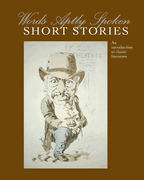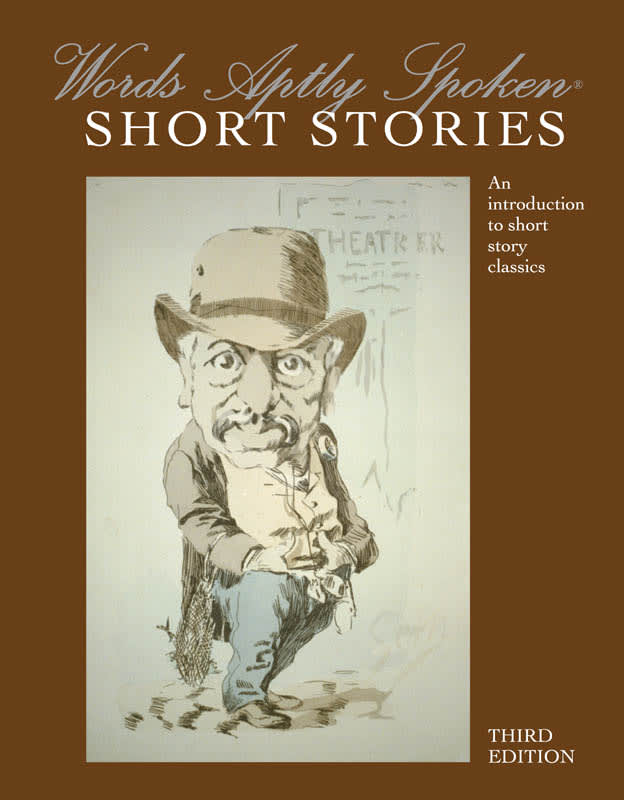Classical Conversations is best known as a program for home education, with classes taught in various geographic locales once a week. The rest of the week, parents guide students as they work through the Classical Conversations curriculum at home.
However, Classical Conversations has published their own series of literature guides under the series title Words Aptly Spoken. While these guides are used in their program, they are also available for purchase to those not enrolled in their program. Literature Guides in the Words Aptly Spoken series are:
- Children’s Literature: An Introduction to Literary Classics
- Short Stories: An Introduction to Short Story Classics
- American Literature: A Companion Guide to Classics by Great American Authors
- American Documents: A Study Guide to the Documents that Shaped the United States
- British Literature: A Companion Guide to Classics by Great British Authors
The Classical Conversations approach involves both students and parents/teachers. Consequently, parents/teachers are expected to read the literature, guide discussions, and evaluate written work, often learning alongside their children. No answer keys are provided, nor are they needed if parents/teachers have read the literary work. However, because parent/teacher and student both need to read and respond to the literature included in some of these guides, and both students and parents/teachers are involved in discussions of the questions, each should have his or her own copy of the guide.
Short Stories and American Documents contain the stories and documents required for study. Children’s Literature and British Literature have only the guide elements for studying a collection of books, while American Literature includes some of the shorter readings but requires students to read additional books. Any additional books needed may be purchased through Classical Conversations or other sources.
All guides teach elements of literature and require discussion and written work. The discussions lend themselves particularly well to group classes, but they can be done with a single student discussing questions with a parent/teacher.
The Guides are printed in black-and-white, and all except Children’s Literature have some black-and-white illustrations. Guides are 8” x 10” with text printed across the entire width of the page rather than split into two columns. With the relatively small-size font used in these books, it can be a little tiring to read works printed within the books. Readers might find it useful to have a card of some sort to move under the text to help keep track of which line comes next. This might be an issue for some readers (children or adults) and not others.
Groups of review questions and thought questions are presented for shorter works or for each chapter within a lengthier book. Review questions tend to focus on “grammar” stage information—what happened, who did what, etc. Thought questions shift to the “dialectic” stage, challenging readers to think more deeply about what they have read and how it relates to other information or ideas.
Literary selections and questions in the guides reflect a Christian worldview although not for every literary work. Because the guides ask questions rather than teach directly, they leave it to readers to decide what they believe. This makes these guides usable for a broad Christian audience.
Children’s Literature: An Introduction to Literary Classics
Children’s Literature guides students in grades 7 through 9 through the study of fourteen well-known “children’s” books, many of them Newberry Medal winners. Some of the titles are The Magician’s Nephew, The Bronze Bow, The Door in the Wall, The Hiding Place, Where the Red Fern Grows, The Phantom Tollbooth, and The Lion, The Witch and the Wardrobe.
It teaches strategies for note taking and writing chapter summaries as well as for creating chronologies (timelines), character charts, glossaries, and maps. It also has an introductory section that should be studied before delving into the literature. This introduction discusses genres, themes, character development, imagery, symbolism, and worldview—elements that will be considered throughout the study of the various novels.
Short Stories: An Introduction to Short Story Classics
Short Stories includes not only stories from authors such as Mark Twain, Hans Christian Andersen, and Fyodor Dostoevsky, but also excepts from plays such as Othello, excerpts from books such as Paradise Lost and The Confessions of St. Augustine, and poetry.
The guide is divided into sections with from one to five readings per section. Each reading is followed by review and thought questions, and each section is followed by a writing assignment that addresses a story element such as plot, theme, surprise endings, character development, mood, and point of view. I really like the way these writing assignments present manageable chunks of the story writing process that might well be fun for most students to tackle. While the target audience is grades 7 through 9, you could easily use this with high school students.
American Literature: A Companion Guide to Classics by Great American Authors
Written for students in grades 9 through 11, American Literature introduces poetry, short stories, sermons, and plays as well as a number of complete books that students will read. Examples of the literary selections are an excerpt from John Winthrop’s sermon, “A Model of Christian Charity,” “Paul Revere’s Ride,” The Sign of the Beaver, The Call of the Wild, The Scarlet Letter, “The Pit and the Pendulum,” Up from Slavery, To Kill and Mockingbird, Born Again (Colson), and Starship Troopers (Heinlein). As you can see by the titles, there are likely to be ideas presented in some of the readings with which students will disagree. This should help develop critical thinking.
The first nine readings (the texts of which are all included in the guide) each include a “Reading Skills” exercise that targets an element of literature such as vocabulary, plot, theme, or characters. While students continue with review and thought questions for every piece of literature, this guide moves into the “rhetoric” level with numerous writing assignments. The primary sources of writing assignments are either “Brain Work” or “Hand Work” activities that accompany the rest of the readings. At the beginning of the guide is a section that teaches essay writing, narrowing the task to four types of essays: book reports, character sketches, book critiques, and critical essays. I cannot find any specific instructions about when to study and apply the section on essay writing, but it appears that students should begin incorporating that instruction alongside their reading of the first novel. While most Brain Work and Hand Work assignments deal with only parts of an essay, parents/teachers might choose to assign complete essays in addition to work required by the guide.
American Documents: A Study Guide to the Documents that Shaped the United States
American Documents should be used in grades 9 through 11, although it seems that the expectation is that it be used the same year as American Literature. The content differs from the other guides in this series: it could be used partly as a literature course, but it might also be used as part of a course in Government. All reading material is included within the guide: speeches, poetry, articles, essays, and legal documents. Examples of some of the items from the first four categories are Patrick Henry’s “Liberty or Death” speech, Franklin Roosevelt’s “Pearl Harbor Address,” the poem “Nathan Hale” by Francis M. Finch, “The Federalist: Number 30” by Alexander Hamilton, and an excerpt from H.L. Mencken’s “The American Language.” Among the documents are The Mayflower Compact, Declaration of Independence, The U.S. Constititution and Amendments, The Missouri Compromise, The Pledge of Allegiance, and the Supreme Court decision Brown v. Board of Education of Topeka. This guide has fewer than a half dozen writing assignments to accompany the review and thought questions, and those writing assignments are relatively brief. Extras included in this guide are a chronological list of the American presidents with pictures of each and an outline of the U.S. Constitution.
British Literature: A Companion Guide to Classics by Great British Authors
British Literature is recommended for grades 9 through 12. Reading material needs to be obtained elsewhere. Some of the literary works to be read are Beowulf, selections from The Canterbury Tales, Paradise Lost, Gulliver’s Travels, Pride and Prejudice, Jane Eyre, Animal Farm, Alice in Wonderland, selections from Father Brown mysteries, The Hobbit, and Screwtape Letters. Brief introductory material is included for each literary work. Review and thought questions are provided for the entire work or by chapters or sections. These are followed by a “Writing Refinement” assignment for each work. Most of these writing assignments will not take much time, but a few require fairly extensive research and writing.
At the beginning of this book is more information on literary devices than is found in the other guides. Students also learn about sentence patterns, source citations, analyzing influences, comparison and contrast, and identifying possible “critical lenses” of authors (e.g., Marxist, Feminist, Mulitculturalist). There is also a Literary Analysis Glossary that defines key terms students should know; these terms are then bolded throughout the guide.
Summary
These courses, with the exception of the American Documents course, might each serve as a complete course for a year (or two years for Children’s Literature). Those wishing to implement a classical approach to education and willing to invest the time to read the literary works should enjoy the results as they learn and discuss with their children.









